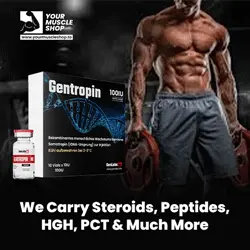Some of the most common dosages are listed below. However, note that the dosages you see are variable depending on the user’s tolerance.
Ligandrol (LGD-4033) Dose & Cycle: User experience has shown benefits at dosage ranges of 3mg-10mg with a time span of 24-36 hours in-between each administration. Improvements have been noticeable in research subjects in as little as 2 weeks and continues upwards until 5 months in (20 weeks). There is a noticeable increase in tolerance around 3 months of consistent use, at which point, the benefits begin to progressively decrease.
Ostarine (MK-2866) Dose & Cycle: Ostarine has an effective dosage range of 25-50mg every 24-36 hours. There has been no significant evidence showing that increasing dosage beyond 50mg produces better results. Multiple studies have shown that Ostarine demonstrates safety and effectiveness up to 6 months (24 weeks) of consistent use.
Andarine (S4) Dose & Cycle: S4 produces the best results at a dosage range of 25-50mg three times per day. Due to these higher doses, there is greater chance of side effects. Adarine has proven to be effective up to 3 months of use.
Testalone (RAD140) Dose & Cycle: Testalone is considered to have similar effectiveness and potency to that of LGD-4033 so it’s dosages are based largely off of that assumption (dosage studies are still being produced). Common dosages for people experience skeletal muscle hypertrophy are in the range of 20-30mg per 24-36 hour time period. Recent studies have been revealing safe use of Testalone for up to 24 weeks.
YK-11 Dose & Cycle: The studies on YK-11 doses are quite limited at this moment so we are forced to base most of these numbers on user experience. Most users in SARM related forums mention they experience the best results using anywhere between 5-12mg two times per day. The reason for take YK-11 twice per day is because of it’s potentially short half-life. As of now, there is not much out there in terms of how long users can safely cycle on Yk-11; it is best to stray on the side of caution.
Anabolicum (LGD-4033) Dose & Cycle: This SARM is considered to be extremely potent so users can get away with much smaller doses than usual. Most users have experienced great benefits at 10mg once in a 24-38 hour time span. Most cycles on Anabolicum last the standard 8 week protocol.
Cardarine (GW 501516) Dose & Cycle: A sufficient dose for Cardarine is between 10-20mg per day. It is suggested that you begin with a 10mg dose and scale this higher as needed. Keep in mind that 10mg is more so for endurance purposes while higher doses will mostly benefit fat loss. Cardarine is generally cycled on for 12-14 weeks with a 4-6 week break in between cycles. GW 501516 is meant for long-term use so there is no evidence that users need to cycle off it. However, since these are research chemicals, it is suggested to always air on the side of caution.
Nutrobal (MK-677) Dose & Cycle: User experience has shown that between 10-25mg once per day seems to be the bread and butter dosage range for Nutrobal. Many users cycle this chemical on a normal SARM cycle of 8-14 weeks on and 4-6 weeks off.
Stenabolic (SR9009) Dose & Cycle: The average Stenabolic dosage is 20-30mg per day. However, the half life of this chemical is extremely short (2-4 hours) so you’ll want to space your dosing throughout the day in even intervals. Once again, treat Stenabolic with the same cycle period commonly associated with SARMs (8-14 weeks on 4-6 weeks off).

Ligandrol (LGD-4033) Dose & Cycle: User experience has shown benefits at dosage ranges of 3mg-10mg with a time span of 24-36 hours in-between each administration. Improvements have been noticeable in research subjects in as little as 2 weeks and continues upwards until 5 months in (20 weeks). There is a noticeable increase in tolerance around 3 months of consistent use, at which point, the benefits begin to progressively decrease.
Ostarine (MK-2866) Dose & Cycle: Ostarine has an effective dosage range of 25-50mg every 24-36 hours. There has been no significant evidence showing that increasing dosage beyond 50mg produces better results. Multiple studies have shown that Ostarine demonstrates safety and effectiveness up to 6 months (24 weeks) of consistent use.
Andarine (S4) Dose & Cycle: S4 produces the best results at a dosage range of 25-50mg three times per day. Due to these higher doses, there is greater chance of side effects. Adarine has proven to be effective up to 3 months of use.
Testalone (RAD140) Dose & Cycle: Testalone is considered to have similar effectiveness and potency to that of LGD-4033 so it’s dosages are based largely off of that assumption (dosage studies are still being produced). Common dosages for people experience skeletal muscle hypertrophy are in the range of 20-30mg per 24-36 hour time period. Recent studies have been revealing safe use of Testalone for up to 24 weeks.
YK-11 Dose & Cycle: The studies on YK-11 doses are quite limited at this moment so we are forced to base most of these numbers on user experience. Most users in SARM related forums mention they experience the best results using anywhere between 5-12mg two times per day. The reason for take YK-11 twice per day is because of it’s potentially short half-life. As of now, there is not much out there in terms of how long users can safely cycle on Yk-11; it is best to stray on the side of caution.
Anabolicum (LGD-4033) Dose & Cycle: This SARM is considered to be extremely potent so users can get away with much smaller doses than usual. Most users have experienced great benefits at 10mg once in a 24-38 hour time span. Most cycles on Anabolicum last the standard 8 week protocol.
Cardarine (GW 501516) Dose & Cycle: A sufficient dose for Cardarine is between 10-20mg per day. It is suggested that you begin with a 10mg dose and scale this higher as needed. Keep in mind that 10mg is more so for endurance purposes while higher doses will mostly benefit fat loss. Cardarine is generally cycled on for 12-14 weeks with a 4-6 week break in between cycles. GW 501516 is meant for long-term use so there is no evidence that users need to cycle off it. However, since these are research chemicals, it is suggested to always air on the side of caution.
Nutrobal (MK-677) Dose & Cycle: User experience has shown that between 10-25mg once per day seems to be the bread and butter dosage range for Nutrobal. Many users cycle this chemical on a normal SARM cycle of 8-14 weeks on and 4-6 weeks off.
Stenabolic (SR9009) Dose & Cycle: The average Stenabolic dosage is 20-30mg per day. However, the half life of this chemical is extremely short (2-4 hours) so you’ll want to space your dosing throughout the day in even intervals. Once again, treat Stenabolic with the same cycle period commonly associated with SARMs (8-14 weeks on 4-6 weeks off).










